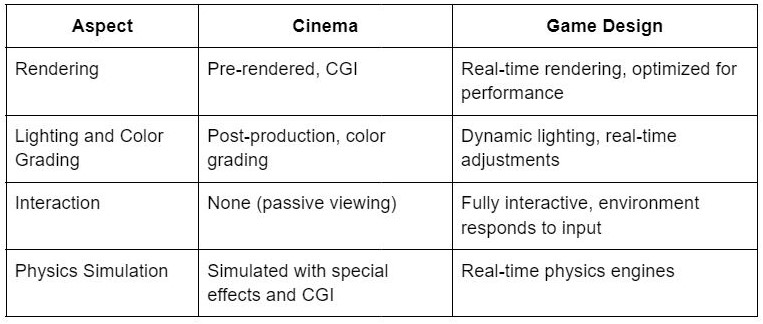Creating an immersive underwater world is a challenge that both filmmakers and game designers have tackled with varying techniques and tools. In cinema, set design plays a crucial role in building these worlds, transporting audiences into the depths of the ocean, often leaving them in awe of the visual spectacle. However, in the realm of video games, set design does more than just visually impress’”it actively engages players, influencing their gameplay experience and interaction with the environment. Fire Kirin, a popular fishing-themed online game, exemplifies how game design can create a rich underwater environment. This article will explore the parallels and distinctions between underwater set design in cinema and in the Fire Kirin– fishing online game.
The Role of Set Design in Cinema
In movies, especially those that take place underwater, set design is a crucial component that makes the story come to life. Realistic and visually appealing environments have always been the aim of animation, from the classics like 20,000 Leagues Under the Sea to the more recent animated masterpieces like Finding Nemo.
Key elements of underwater set design in cinema:
- Special Effects: Used to replicate the movement of water, the play of light, and the physics of underwater objects.
- CGI (Computer-Generated Imagery): Essential for creating vast, detailed underwater landscapes that would be impossible to film in real life.
- Lighting: Plays a significant role in setting the mood, often utilizing blues and greens to mimic the underwater light filtering through the depths.
- Practical Effects: In some films, real water tanks and underwater sets are used to enhance authenticity.
The challenges in cinema are primarily visual, aiming to make the audience feel as though they are submerged in another world. The success of these underwater scenes relies heavily on the seamless integration of practical and digital effects, along with precise lighting and color grading.
Transition to Game Design: Similarities and Differences
While the objective of set design in cinema is to create a visually convincing world, in game design, the environment must also be interactive and responsive to the player’s actions. This shift from passive viewing to active engagement introduces several new challenges and opportunities for designers.
Similarities between cinema and game design:
- Visual Realism: Both mediums strive for visual accuracy in rendering underwater scenes.
- Artistic Vision: In both cinema and games, the design of the environment must align with the overall mood and narrative.
- Use of Technology: Advanced technology such as CGI in cinema and 3D modeling in games is critical for creating detailed, immersive worlds.
Differences in game design:
- Interactivity: Unlike films, where the environment is static, game environments must be designed to respond to player input, making them dynamic and fluid.
- Player Perspective: In games, players can often control the camera, requiring environments to be detailed from multiple angles and perspectives.
- Real-time Rendering: Game environments are rendered in real-time, meaning they must be optimized for performance without sacrificing visual quality.
In transitioning from cinema to game design, the focus shifts from creating a visually stunning set to developing a fully interactive world that enhances the player’s experience.
Fire Kirin: A Case Study in Game Set Design
Video game set designers may create a deep underwater world that is not only visually striking but also essential to the gameplay, as demonstrated by Fire Kirin. The designers of the game have skillfully blended interactive elements that keep players interested with visual realistic components.
Key elements of Fire Kirin’s set design:
- Visual Style: The game employs a bright, colorful palette that stands out, making the underwater environment both inviting and engaging.
- Animation: Smooth animations of fish and underwater currents enhance the realism, making the environment feel alive.
- Interactive Elements: The environment is not just a backdrop but an active part of the game, with moving targets and dynamic effects that respond to player actions.
- User Interface (UI): The game’s UI is integrated seamlessly into the environment, ensuring that it enhances rather than detracts from the immersive experience.
Fire Kirin is a prime example of how contemporary game design can draw influence from film while still pushing the limits of player interaction and interactivity. In addition to being a visual marvel, the game’s underwater world is a dynamic, interactive setting that is essential to the whole gaming experience.
Technical Aspects: Cinema vs. Game Design
The technical aspects of creating an underwater world in cinema and game design involve different approaches, tools, and challenges, though both share the goal of achieving visual and experiential realism.
Cinema:
- Special Effects and CGI: Filmmakers rely heavily on CGI and special effects to create believable underwater scenes. These effects include simulating water movement, lighting, and the behavior of underwater life. The process often involves a combination of green screen technology, motion capture, and detailed 3D modeling to achieve the desired level of realism.
- Lighting and Color Grading: In cinema, the lighting of underwater scenes is meticulously crafted in post-production. Color grading is used to achieve the right tones, often employing deep blues, greens, and filtered light effects to mimic the underwater atmosphere.
- Practical Effects: In some cases, real water tanks and sets are used to add authenticity. This requires precise coordination between the actors, camera operators, and special effects teams to ensure that the scene is both realistic and visually coherent.
Game Design:
- Real-time Rendering: Unlike cinema, where scenes are pre-rendered, games like Fire Kirin must render their environments in real-time. This demands a high level of optimization to ensure that the game runs smoothly while maintaining visual quality. Techniques such as LOD (Level of Detail) scaling and dynamic lighting are commonly used.
- Physics Simulation: Game designers must simulate the physics of underwater environments, such as buoyancy, resistance, and the way light refracts underwater. These physics engines run in real-time, adding a layer of complexity to the design process.
- Interactive Elements: In game design, technical considerations also include how players interact with the environment. This means not only creating a visually stunning world but also ensuring that it responds appropriately to player inputs, such as shooting or movement, in a way that feels natural and intuitive.
Comparison Table:
Artistic Vision: Conveying Mood and Story
In cinema and game design, the artistic vision behind set design is crucial in conveying the mood and story to the audience or player. In cinema, the set design acts as a powerful tool for visual storytelling, where every element within the scene contributes to the overall narrative. These carefully crafted environments guide the audience’s emotional response, enhancing the impact of key moments in the story without the need for dialogue or overt exposition.
The environment plays a dual role in game design, especially in Fire Kirin, acting as both a backdrop and an active participant in the narrative. In order to thoroughly immerse the player, the game’s underwater world makes use of interactive features, sound effects, and visual clues to set the scene and advance the story. Because the game’s atmosphere is dynamic, the player’s actions have the power to change the mood, which adds to the experience’s personalization and engagement. Fire Kirin’s creative vision makes sure that the underwater environment is more than simply a pretty picture; it’s a real, breathing environment that reacts to the player.
Audience Interaction: Passive Viewing vs. Active Engagement
One of the most significant differences between cinema and game design lies in how the audience interacts with the environment.
Cinema:
- Passive Viewing: In film, the audience is a passive observer. The environment is presented to them, and their interaction is limited to emotional and intellectual engagement with the story. The success of the set design in cinema is measured by its ability to evoke the intended emotions and convey the narrative effectively without direct interaction.
- Visual Spectacle: The goal is often to create a visual spectacle that leaves a lasting impression, using the environment to heighten the impact of key scenes and moments in the story.
Game Design:
- Active Engagement: In games, the player is an active participant. The environment is not just something to be observed but something to be explored, manipulated, and interacted with. In Fire Kirin, the underwater world is designed to engage players through interactive elements such as moving targets, dynamic lighting, and responsive gameplay mechanics.
- Feedback Loop: The interaction between the player and the environment creates a feedback loop. Players’ actions have consequences in the game world, which in turn influences their next moves. This ongoing interaction is a core aspect of the gaming experience, making the environment an essential component of gameplay.
Comparison:
- Cinema: The audience’s experience is shaped by the director’s vision, with limited input or interaction.
- Game Design: The player’s experience is shaped by their own actions within the environment, creating a unique and personalized experience for each individual.
Conclusion
Creating an underwater environment calls for a unique combination of technical know-how, creative vision, and in-depth knowledge of how viewers engage with these settings, both in film and in game design. While film aims to provide an immersive, physically stunning, and emotionally stirring experience, game design, such as that of Fire Kirin, must go one step further and create a completely interactive, stunning universe.
The two media’s technical requirements are very different: games need real-time rendering and physics simulations, whereas movies rely on pre-rendered images. Nonetheless, the creative objectives are in line with each other’s quest of immersion and narrative, with each media playing to its advantages to produce underwater experiences that will never be forgotten.


